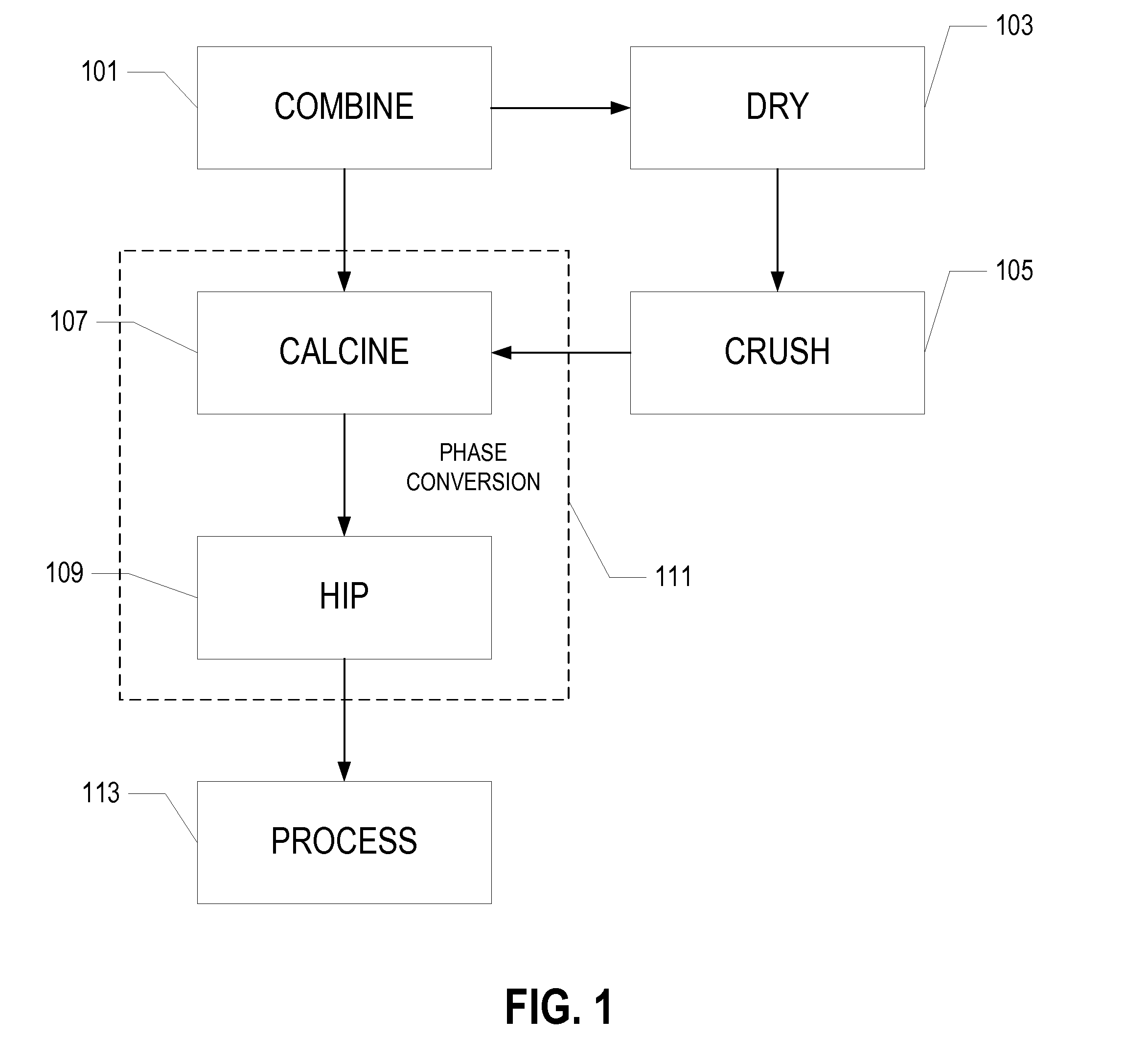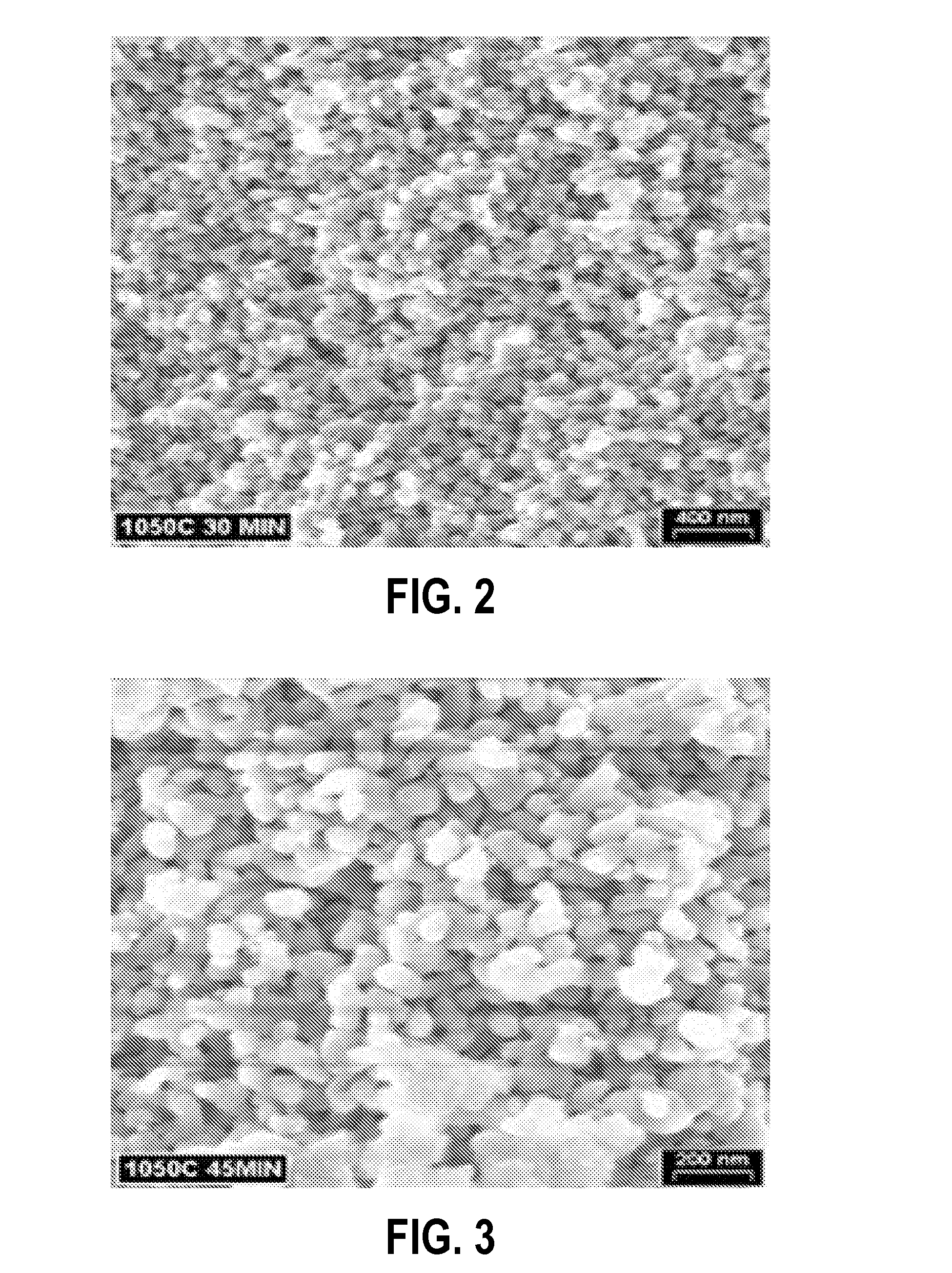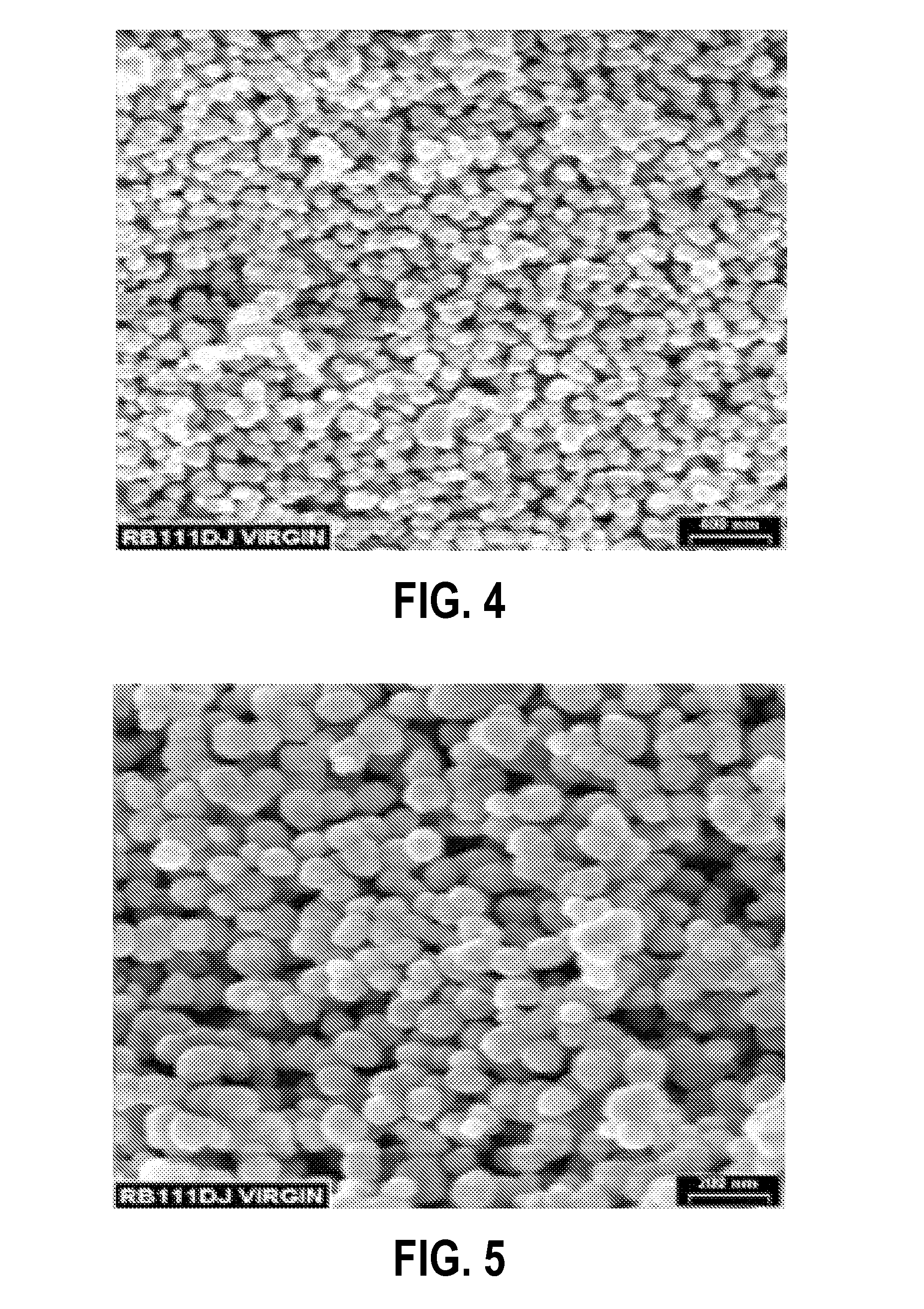Ceramic particulate material and processes for forming same
a technology of applied in the field of drawing to ceramic particulate material and process for forming same, can solve the problems of confined thermal budget, and limited particle morphologies and characteristics enabled by such approaches
- Summary
- Abstract
- Description
- Claims
- Application Information
AI Technical Summary
Benefits of technology
Problems solved by technology
Method used
Image
Examples
example 1
[0047]Example 1 illustrates the effect of temperature and pressure on conversion of seeded aluminous feedstock in the form of boehmite. Example 1 begins with the formation of an alumina sol prepared by mixing 100 grams of Disperal boehmite from Sasol Corporation into 700 ml of water with 5% alpha-alumina seeds, having a crystal size of 0.02 microns, generated by horizontal bead milling of 0.5 micron alpha-alumina and 3% of nitric acid relative to boehmite. The sample was then placed into a drying oven at 80° C. overnight. Drum drying into flakes may alternatively be utilized. The dried material was calcined into a box furnace at 500° C. for two hours, to form transition phase alumina, forming an open structure, that is, a loose particulate material having limited inter particle necking. The material was then subjected to HIPing treatment to obtain alpha-alumina powder. Table 1 below shows the effect of temperature and pressure combinations on the phase transformation of the loose po...
example 2
[0049]Further characterization studies on powder particulate sphericity were also carried out. As noted above, sphericity may be characterized in terms of concavity; concavity being the percent of particles based upon a sample of at least 100 particles, which have a concave outer peripheral portion that extends along a distance not less than 10% of d50 of the particulate material by TEM inspection, the concave outer peripheral portion having a negative radius of curvature as viewed from an interior of the particle. In this respect, a state of the art nanosized alpha-alumina powder is depicted in FIGS. 6-11 from Taimicron. Those particles marked represent particles that have the requisite concavity to be considered a concave particle. Based upon the sample analysis depicted in FIGS. 6-11, the Taimicron powder was found to have a concavity of 39.2%. A second state of the art powder from Sumitomo (commercially available as AKP700) is shown in TEM images corresponding to FIGS. 12-15. Th...
example 3
[0051]Example 3 illustrates the effect of seeding on the minimum transformation temperature required to transform seeded boehmite to alpha-alumina. A first alumina gel was prepared by mixing 100 grams of Disperal boehmite (d50=0.08 microns) into 700 ml of water and 3% of nitric acid relative to boehmite. A second gel was prepared with the same proportion but using a finer boehmite designated P2 (d50=0.05 microns). The seeding levels (wt %) as a function of peak temperature (° C.) required to convert the seeded boehmite into the alpha phase is shown in FIG. 26, where alpha transformation was determined using DTA analysis. FIG. 26 shows that the finer dispersion corresponding to the P2 alpha-alumina precursor achieves a transformation from boehmite to alpha-alumina at comparatively lower temperatures than that of the sample containing Disperal.
PUM
| Property | Measurement | Unit |
|---|---|---|
| specific surface area | aaaaa | aaaaa |
| specific surface area | aaaaa | aaaaa |
| sphericity | aaaaa | aaaaa |
Abstract
Description
Claims
Application Information
 Login to View More
Login to View More - R&D
- Intellectual Property
- Life Sciences
- Materials
- Tech Scout
- Unparalleled Data Quality
- Higher Quality Content
- 60% Fewer Hallucinations
Browse by: Latest US Patents, China's latest patents, Technical Efficacy Thesaurus, Application Domain, Technology Topic, Popular Technical Reports.
© 2025 PatSnap. All rights reserved.Legal|Privacy policy|Modern Slavery Act Transparency Statement|Sitemap|About US| Contact US: help@patsnap.com



